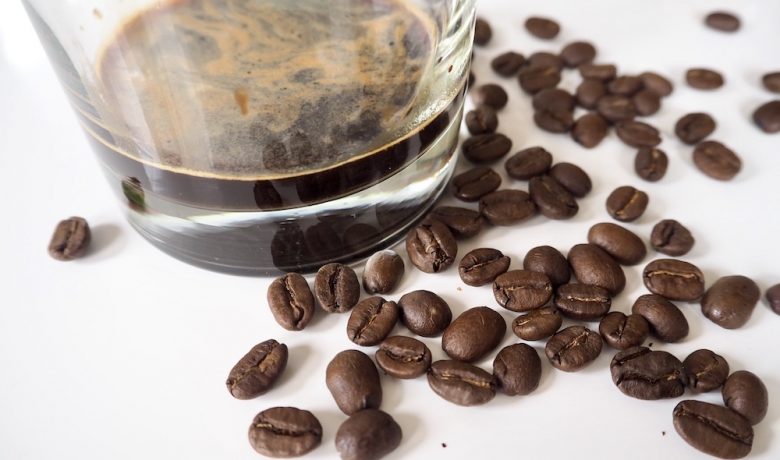Can You Eat Coffee Beans? From Raw to Roasted and Even Coffee Grounds
Maybe you’re pressed for time and can’t brew a fresh pot of coffee, or perhaps you’ve just gotten your hands on a tempting bag of beans that you’re eager to sample. Or maybe you’re simply curious. Whatever the case may be, if you’re wondering about eating coffee beans, you’ve come to the right place.
In short, yes, you can eat coffee beans—but let’s delve into this topic by looking at a few different types of coffee beans.
Coffee Cherries
Believe it or not, coffee actually comes from a fruit that looks a lot like cherries. The beans we know and love are the hard pits inside these unusual fruits. So, let’s begin by discussing the fruit itself.
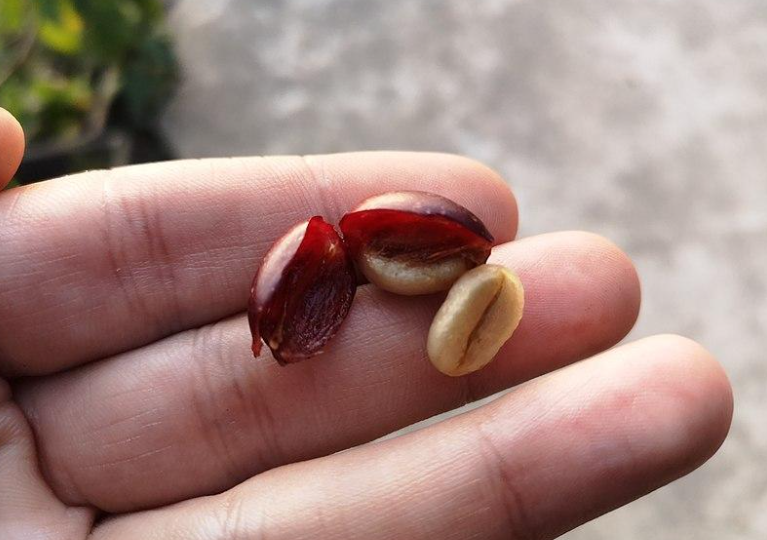
There isn’t much flesh around the seeds of these small fruits—just a thin layer of fibers and sticky substance—but if you peel off this flesh and taste it, you might be surprised. Since almost all the unique coffee flavors we recognize come out during roasting, these cherries taste nothing like your morning cup of coffee.
Thanks to this protective flesh, coffee cherries are quite sweet. If you’re really keen on understanding how coffee is made, it might be worth trying different coffees and comparing them. With enough practice, coffee enthusiasts can start identifying the unique varietal differences in these cherries—these subtle variations hint at significant differences after roasting.
Green Beans—Can You Eat Raw Coffee Beans?
These so-called “green beans” are not vegetables at all. The term “green beans” refers to coffee beans that have been stripped of their fruit but haven’t been roasted yet.
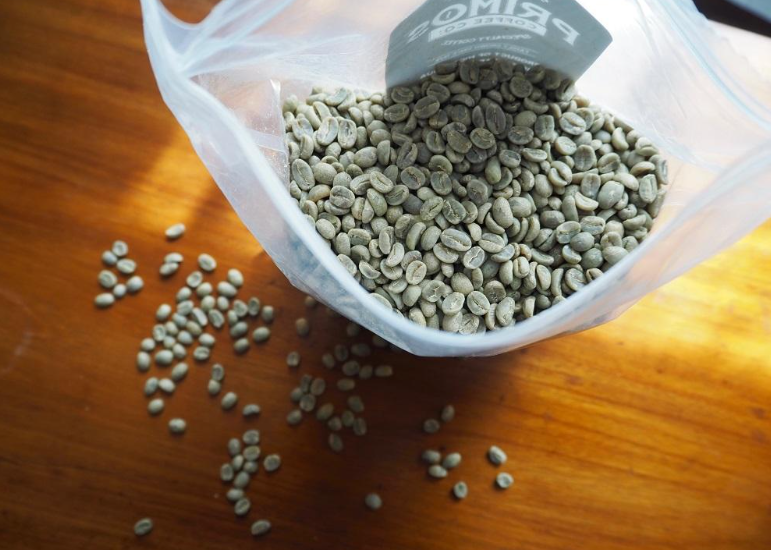
Interestingly, at this stage, the beans are highly durable and resilient. Once properly dried, they can be shipped worldwide without much concern. This means that green coffee beans are often treated as commodities similar to sugar or cotton. By themselves, these beans aren’t particularly interesting, and their flavors change very little.
Biting into these hard little beans might not be very comfortable. Expect a woody texture and a tangy taste. Because of this, eating raw coffee beans has never really become popular—but if you’re curious, we suggest giving it a try.
What’s a better way to experience raw coffee beans? Brew a pot of green coffee!
Can you eat roasted coffee beans?
At this stage of processing the beans, we finally encounter something more familiar. Picture the delicious-looking beans displayed above your favorite barista’s counter or the aromatic ones available at your local grocery store—that’s what we’re talking about now.
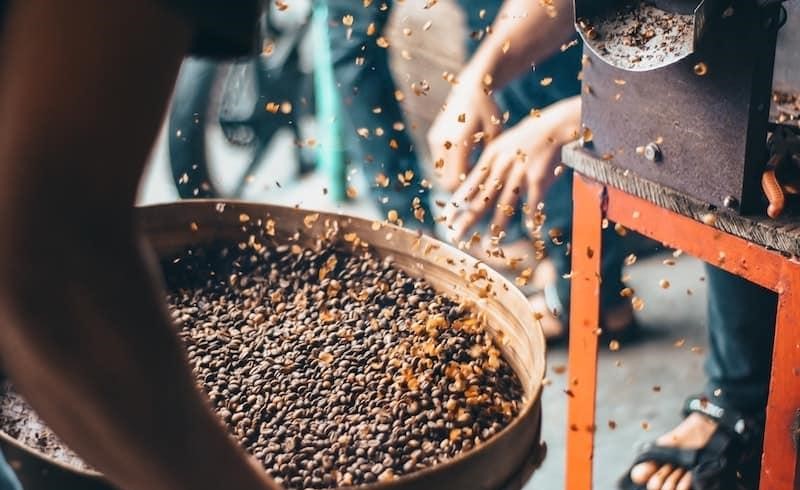
Although it’s uncommon to eat roasted coffee beans on their own, there are several reasons you might consider doing so. For instance, professional coffee roasters often bite into roasted beans to monitor their processing, while curious home baristas shouldn’t hesitate to sample the beans before brewing.
Roasting unlocks all the intriguing flavors and aromas in coffee. These beans have a delightful taste, each with its own unique nuances.
Feel free to chew on these beans, but be cautious not to overindulge. Now that we’ve discovered an irresistibly tempting coffee bean that could easily become a frequently consumed snack, it’s important to discuss both the health benefits and potential concerns of eating coffee beans.
What are the health impacts of consuming coffee beans?
Caffeine
Generally speaking, there’s little cause for concern when snacking on coffee beans. The primary issue is caffeine intake; however, the caffeine content in an average cup of brewed coffee is approximately 16 times that of a single coffee bean. This means you’d need to eat around 66 coffee beans to reach the upper limit of daily caffeine consumption recommended by doctors. Although 66 beans might not sound like much, it’s unlikely that your casual snacking will get you anywhere near this number.
That said, if you’re mindful of your daily caffeine intake, you should consider the contribution from coffee beans alongside other sources of caffeine. Be sure to monitor your overall caffeine consumption and make responsible health decisions.
Acid Reflux
In addition to caffeine, there’s another crucial factor to consider when eating coffee beans: acid reflux (also known as gastroesophageal reflux disease or GERD). This condition occurs when stomach acid flows back into the esophagus, causing a burning sensation.
Just as a typical cup of coffee can aggravate this issue, eating coffee beans can also make it worse. A possible solution is opting for low-acid coffee brands like Lifeboost.
Aside from keeping these two concerns in mind, there’s virtually nothing else to worry about when consuming coffee beans.
Chocolate Beans
It’s also worth highlighting our favorite way to enjoy coffee beans: covered in chocolate. Just like with anything else, these chocolate-covered beans are incredibly satisfying.
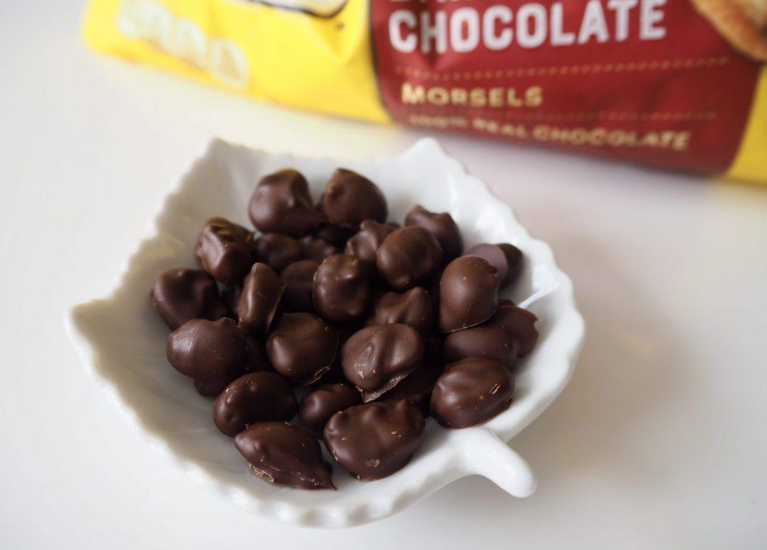
The chocolate coating not only offers a pleasant shell to bite into but also adds a touch of sugar to counteract the bitterness of the beans. These beans are incredibly satisfying and make excellent gifts or gift fillers.
You can easily make some at home or buy pre-made ones. Trader Joe’s has been selling these beans for a long time (in several different varieties), and its brand is undoubtedly the most popular.
Check out our detailed review of the best chocolate-covered beans of 2020 here.
Can you eat coffee grounds?
You might be curious about how to consume ground coffee. Just like other forms of coffee beans mentioned above, yes, you can eat coffee grounds. A popular way to enjoy them is through espresso powder, which is finely ground and dehydrated. Espresso powder is commonly used in baking or as an interesting dessert topping.
However, you might want to skip snacking on regular ground coffee. Unlike espresso powder and roasted beans, coffee grounds are tough to manage and hard to swallow. If you do decide to try some (maybe just out of curiosity), rest assured—they won’t cause serious harm if eaten in moderation.
Consider using any leftover grounds as part of your skincare routine or as a great fertilizer for your garden. Here’s a complete list of uses for your coffee grounds.
We hope this answers all your questions about eating coffee beans. Enjoy your snack.
